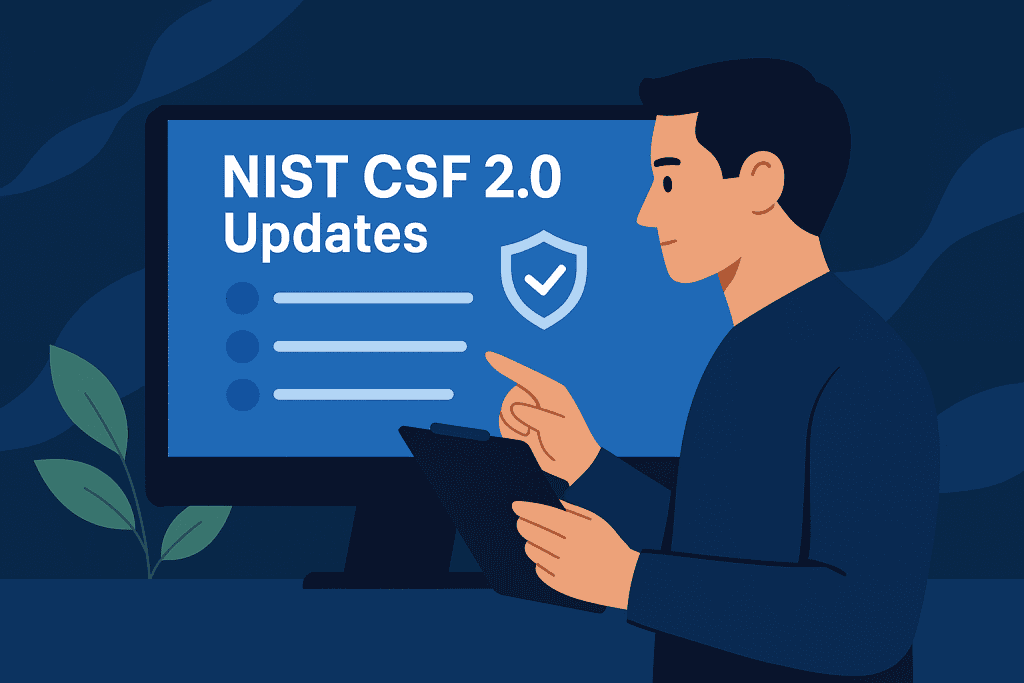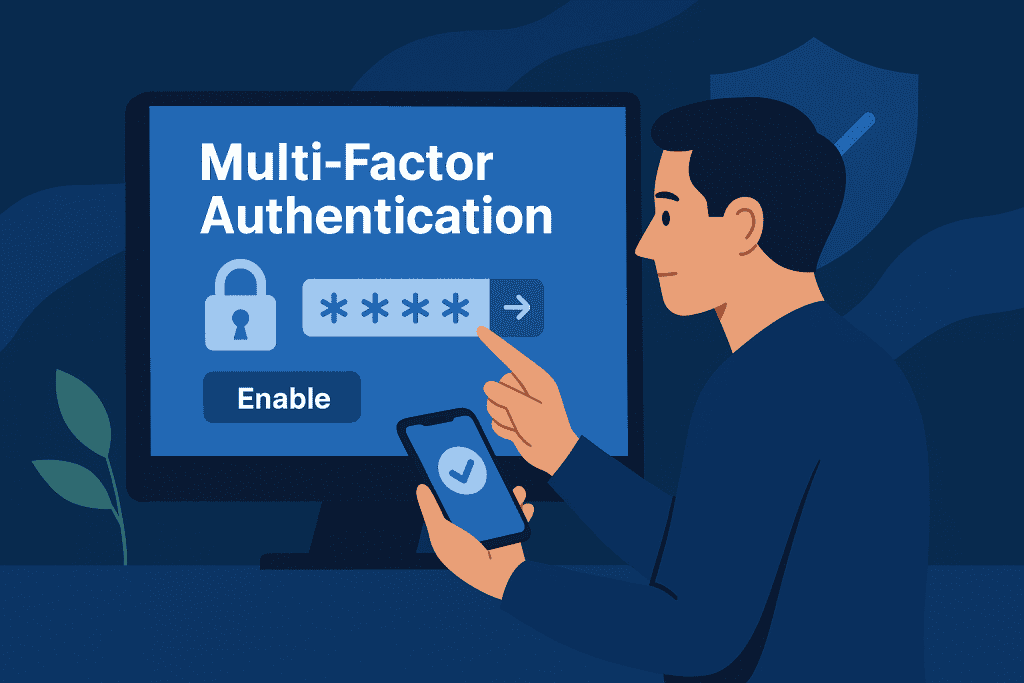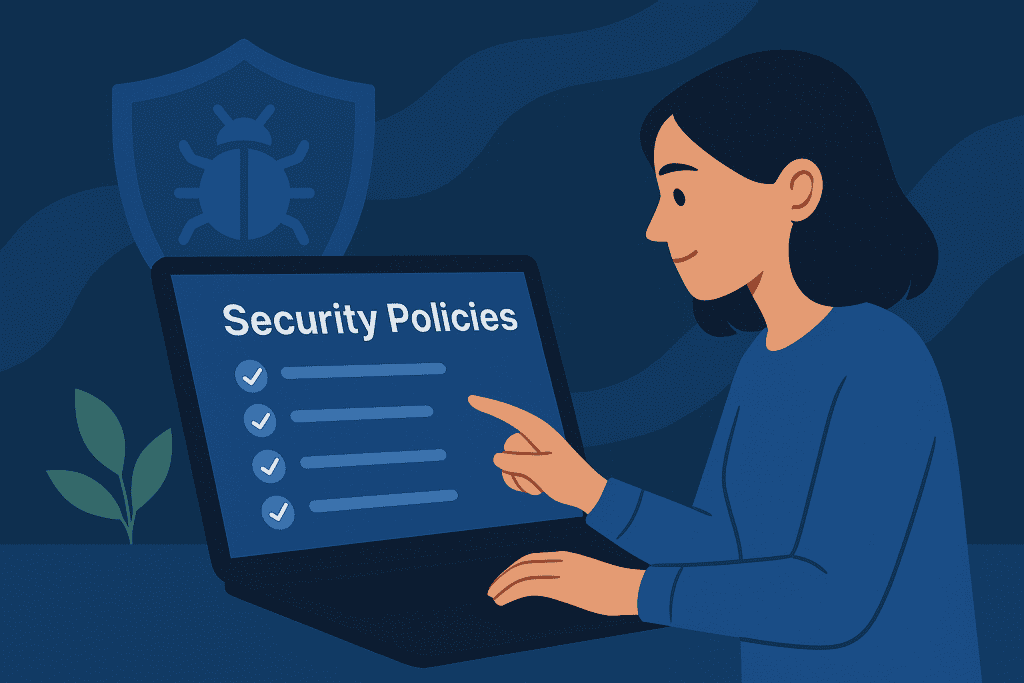
Cybersecurity isn’t just a buzzword—it’s an essential part of running a business in today’s digital world. Every day, new cyber threats emerge, targeting businesses of all sizes. From phishing attacks to ransomware and data breaches, the risks are endless. If you’re responsible for protecting an organization’s sensitive information, staying ahead of these threats is a must.
That’s where NIST CSF 2.0 comes in.
The National Institute of Standards and Technology (NIST) first introduced the Cybersecurity Framework (CSF) in 2014. It quickly became the gold standard for organizations looking to strengthen their cybersecurity defenses. But as cyber threats evolved, so did the need for an updated framework. NIST CSF 2.0 brings major improvements, making it more flexible, scalable, and comprehensive than ever before.
So, what’s new? And more importantly, how can your organization implement these changes to stay secure in today’s fast-paced, cyber-threat-filled world? In this guide, we’ll break it all down—no confusing jargon, just clear, actionable steps.
Materials or Tools Needed
Before diving into implementation, ensure you have the right tools and resources:
| Tool/Requirement | Purpose |
|---|---|
| NIST CSF 2.0 Documentation | Official guide detailing the latest updates. |
| Cyber Risk Assessment Tools | Helps identify vulnerabilities and assess risks. |
| Security Policies & Procedures | Existing cybersecurity measures that need updating. |
| Incident Response Plan | Strategy for handling potential cybersecurity incidents. |
| Cybersecurity Team or Consultant | Optional but useful for expert guidance. |
Step-by-Step Instructions
1. Understand the Key Updates in NIST CSF 2.0
The first step is to get familiar with the major changes in NIST CSF 2.0.
Some of the most significant updates include:
- A new “Govern” function emphasizing leadership’s role in cybersecurity.
- Enhanced guidance for small and medium-sized businesses (SMBs) to make the framework more accessible.
- Stronger supply chain security measures to prevent breaches originating from third-party vendors.
- Better alignment with global cybersecurity frameworks, making compliance easier across industries.
- Updated best practices for managing risks associated with emerging threats.
Understanding these changes will help you apply them effectively and tailor them to your organization’s needs.
2. Map Your Cybersecurity Strategy to NIST CSF 2.0
Once you’re familiar with the updates, the next step is to align your current cybersecurity practices with the framework.
- Review your existing security policies and compare them with the new NIST CSF 2.0 guidelines.
- Identify gaps where your organization falls short.
- Develop a roadmap for implementing necessary changes, assigning responsibilities to the right teams.
Taking this structured approach will ensure that your cybersecurity program is strategic and effective rather than a collection of random security measures.
3. Strengthen Governance and Risk Management
One of the biggest updates in NIST CSF 2.0 is the Govern function, which highlights the critical role of leadership in cybersecurity.
- Ensure that executives and board members understand cybersecurity risks and their impact.
- Establish clear governance policies that define how cybersecurity is managed across your organization.
- Conduct regular cybersecurity risk assessments to stay ahead of potential threats.
Cybersecurity isn’t just an IT issue—it’s a business-wide responsibility that requires strong leadership and clear accountability.
4. Implement Security Enhancements Based on the Framework

With this, organizations are encouraged to adopt more advanced security measures to keep up with evolving cyber threats.
- Deploy zero-trust architecture to enhance security.
- Strengthen authentication with multi-factor authentication (MFA).
- Secure IoT devices, which are often overlooked but can be entry points for cybercriminals.
- Use AI-powered threat detection to identify potential attacks in real time.
Cybersecurity threats are constantly evolving, and organizations must be proactive rather than reactive in implementing security measures.
5. Monitor, Measure, and Continuously Improve
Cybersecurity isn’t a “set it and forget it” kind of thing—it requires constant monitoring and improvement.
- Conduct regular security audits to ensure compliance with NIST CSF 2.0.
- Implement continuous monitoring to detect potential cyber threats before they become major problems.
- Keep up with emerging cybersecurity trends and adjust security strategies accordingly.
By making cybersecurity an ongoing process, your organization can stay one step ahead of cybercriminals.
Tips and Warnings
| Tip | Explanation |
|---|---|
| Start with a risk assessment | Identify your biggest security risks first. |
| Engage leadership and employees | Cybersecurity should be a priority for everyone. |
| Use automation | AI-driven security tools help detect threats faster. |
| Keep documentation updated | Record all security policies and framework implementations. |
Common Mistakes to Avoid

- Ignoring Governance – Many organizations focus on technical controls but neglect leadership’s role in cybersecurity, which is emphasized in NIST CSF 2.0.
- Not Addressing Supply Chain Risks – Weak security in third-party vendors can lead to breaches, making supply chain security a critical focus in the updated framework.
- Overlooking IoT Security – IoT devices often have weak default settings, making them easy targets for cybercriminals if not properly secured.
- Failing to Monitor and Update – Cyber threats evolve constantly, so regular security updates and continuous monitoring are essential for staying protected.
- Relying Solely on Compliance – Meeting cybersecurity regulations is important, but compliance alone doesn’t guarantee security—a proactive approach is necessary.
- Lack of Employee Cybersecurity Training – Even the best security systems fail if employees aren’t trained to recognize phishing attempts and security threats.
- Underestimating Data Backup and Recovery – Without regular backups and a strong recovery plan, businesses risk major data loss after cyberattacks.
- Not Testing Incident Response Plans – Having a plan isn’t enough; regular cybersecurity drills and attack simulations help teams respond effectively to real threats.
Conclusion
NIST CSF 2.0 provides a stronger, more adaptable framework for managing cybersecurity risks. By understanding the key updates, mapping your strategy, improving governance, and implementing continuous monitoring, you can enhance your organization’s security posture and reduce cyber risks.
The digital world isn’t getting any safer—but with the right approach, you can stay ahead of threats and protect what matters most.
Start implementing NIST CSF 2.0 today and build a more secure future for your organization!
FAQ
What are the key changes in NIST CSF 2.0?
NIST CSF 2.0 introduces a new ‘Govern’ function, enhanced security for supply chains, and improved guidance for small and medium-sized businesses.
How can small businesses implement NIST CSF 2.0 effectively?
Small businesses should start by conducting a cybersecurity risk assessment, prioritizing security controls, and following the framework’s simplified guidelines.
How does NIST CSF 2.0 address emerging technologies?
The framework provides recommendations for securing IoT devices, leveraging AI-driven threat detection, and adapting to new inventions and futuristic technology.
Resources
- Hyperproof. Update
- Harbor Technology Group. Navigating the Changes: Overview
- Hylant. Understanding the Impact
- YouTube. Overview
- X – Announcement
